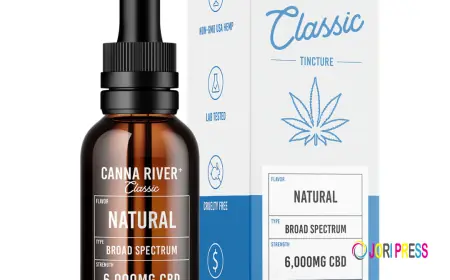Customer Satisfaction Survey: The Secret to Understanding Your Customers Better
Learn what a customer satisfaction survey is, why it matters, and how to use it to improve customer loyalty, retention, and brand experience.

In today’s highly competitive market, customers have endless choices. Whether it’s a product, service, or brand experience, they expect nothing less than excellence. But how can a business truly know if it’s meeting customer expectations? The answer lies in customer satisfaction surveys.
These surveys act as a mirror, reflecting how customers perceive your brand and helping you identify what’s working — and what’s not. With smart tools like piHappiness, businesses can easily collect real-time feedback, measure satisfaction levels, and gain actionable insights to enhance the overall customer experience.
Let’s explore what customer satisfaction surveys are, why they’re important, and how you can use them effectively to grow your business.
What is a Customer Satisfaction Survey?
A customer satisfaction survey (CSAT) is a feedback tool that helps businesses measure how happy or satisfied customers are with their products, services, or overall experience.
These surveys typically include questions like:
-
“How satisfied are you with our service?”
-
“Would you recommend our brand to others?”
-
“How would you rate your recent purchase experience?”
The responses are usually gathered through rating scales (1–5 stars or emoji ratings), multiple-choice questions, or open-ended text feedback.
By analyzing this feedback, businesses can uncover patterns, improve operations, and enhance the overall customer experience.
Why Customer Satisfaction Surveys Matter
Customer satisfaction surveys are more than just a collection of opinions — they’re powerful tools for business growth.
Here are a few key reasons why they’re essential:
1. Improve Customer Retention
Satisfied customers are loyal customers. A well-timed satisfaction survey helps you identify unhappy customers before they churn. By addressing their concerns promptly, you can improve retention and build stronger relationships.
2. Enhance Product and Service Quality
Customer feedback highlights specific pain points — whether it’s a faulty feature, poor delivery experience, or unclear communication. Acting on this data helps improve the overall quality of your offerings.
3. Measure Brand Perception
How do customers view your brand? Are they satisfied, neutral, or unhappy? Surveys provide an honest picture of your brand’s reputation and help you align your marketing and service strategies accordingly.
4. Boost Customer Loyalty
When customers see that their feedback is taken seriously and acted upon, they feel valued. This fosters trust and loyalty — two vital components of long-term business success.
5. Data-Driven Decision Making
Customer satisfaction surveys turn subjective opinions into measurable data. These insights enable you to make smarter, evidence-based business decisions.
Types of Customer Satisfaction Surveys
There isn’t a one-size-fits-all approach. Depending on your goals, you can use different types of satisfaction surveys:
1. CSAT (Customer Satisfaction Score)
Measures short-term satisfaction based on a recent interaction.
Example question: “How satisfied are you with your recent purchase?”
2. NPS (Net Promoter Score)
Evaluates customer loyalty and likelihood to recommend your brand.
Example question: “On a scale of 0–10, how likely are you to recommend us to a friend?”
3. CES (Customer Effort Score)
Measures how easy it was for customers to get what they wanted from your business.
Example question: “How easy was it to resolve your issue today?”
4. Product or Service Feedback Surveys
Gathers feedback about a specific product or feature to guide improvements.
5. Post-Interaction Surveys
Sent after a customer support chat or call to evaluate the quality of service.
Best Practices for Creating Effective Customer Satisfaction Surveys
Creating a great survey isn’t just about asking questions — it’s about asking the right questions in the right way.
Here are some best practices to make your surveys effective and engaging:
1. Keep It Short and Focused
A long survey discourages participation. Limit it to 5–10 key questions that address your main goals.
2. Use Simple and Clear Language
Avoid technical jargon. Questions should be easy to understand for all respondents.
3. Ask Actionable Questions
Design questions that provide insights you can act upon. For example, “How can we improve your experience?”
4. Choose the Right Timing
Send surveys right after a purchase, support interaction, or delivery when the experience is still fresh in the customer’s mind.
5. Offer Multiple Response Options
Mix rating scales, multiple-choice, and open-ended questions for better-quality feedback.
6. Incentivize Responses
Encourage participation with small rewards, discounts, or loyalty points.
7. Follow Up
Acknowledge feedback and communicate what changes you’ve made as a result. It shows customers their opinions truly matter.
How to Analyze Customer Satisfaction Survey Results
Collecting feedback is just the first step — analysis is where the real value lies.
1. Segment Your Data
Group responses based on demographics, purchase history, or customer type to identify trends.
2. Track Key Metrics
Keep an eye on your CSAT, NPS, and CES scores over time. A decline in any of these metrics may signal emerging issues.
3. Identify Common Themes
Look for recurring words, sentiments, or complaints in open-ended feedback to understand key pain points.
4. Prioritize Actionable Insights
Focus on areas that will have the greatest impact on customer satisfaction and retention.
5. Share Results Across Teams
Distribute insights to departments like marketing, sales, and support so everyone can align toward improving the customer journey.
Benefits of Using a Customer Satisfaction Survey Tool
Manual surveys can be time-consuming. A customer feedback or satisfaction survey software automates the process and provides real-time insights.
Here’s what a good tool can do:
-
Collect feedback across multiple channels (email, SMS, website, kiosks, or QR codes).
-
Analyze responses instantly with AI-driven dashboards.
-
Segment customers and track satisfaction trends.
-
Integrate with CRM and helpdesk systems for seamless workflow.
For example, tools like piHappiness simplify survey management and offer real-time analytics, helping businesses improve customer experience with data-backed decisions.
Key Metrics to Track in Customer Satisfaction Surveys
Monitoring key performance indicators helps you evaluate success effectively.
-
CSAT Score: Average customer satisfaction rating (commonly expressed as a percentage).
-
NPS Score: Measures customer loyalty; calculated by subtracting the percentage of detractors from promoters.
-
Response Rate: Indicates how many customers participated in your survey.
-
Churn Rate: Helps identify if low satisfaction correlates with customer drop-off.
Tracking these over time can reveal the true health of your customer relationships.
Common Mistakes to Avoid in Customer Satisfaction Surveys
Even small mistakes can distort your data. Avoid the following pitfalls:
-
Asking too many questions.
-
Using biased or leading questions.
-
Ignoring negative feedback.
-
Failing to act on survey results.
-
Not communicating follow-up actions to customers.
Frequently Asked Questions (FAQs)
1. What is the ideal length of a customer satisfaction survey?
Ideally, a survey should take no more than 2–3 minutes to complete, with around 5–10 questions.
2. How often should I conduct customer satisfaction surveys?
Depending on your business type, once every quarter or after major customer interactions is ideal.
3. What is a good CSAT score?
A CSAT score between 75% and 85% is considered strong, though it varies by industry.
4. How do I increase survey response rates?
Keep surveys short, send them at the right time, and offer small incentives to encourage participation.
5. Can I use customer satisfaction surveys for employee performance evaluation?
Yes. Feedback from customers can highlight areas where staff training or support is needed.
Conclusion
A customer satisfaction survey is more than a simple questionnaire — it’s a strategic tool that reveals what your customers think, feel, and expect. Businesses that actively listen to their customers can adapt faster, improve experiences, and grow sustainably.
When done right, customer satisfaction surveys can transform feedback into a roadmap for long-term success.
Ready to Elevate Your Customer Experience?
Start collecting real-time feedback with piHappiness, the ultimate customer feedback and satisfaction survey software.
Get actionable insights, improve customer loyalty, and build better relationships — all in one place.
Book a Free Demo Today!
What's Your Reaction?
 Like
0
Like
0
 Dislike
0
Dislike
0
 Love
0
Love
0
 Funny
0
Funny
0
 Angry
0
Angry
0
 Sad
0
Sad
0
 Wow
0
Wow
0


















































